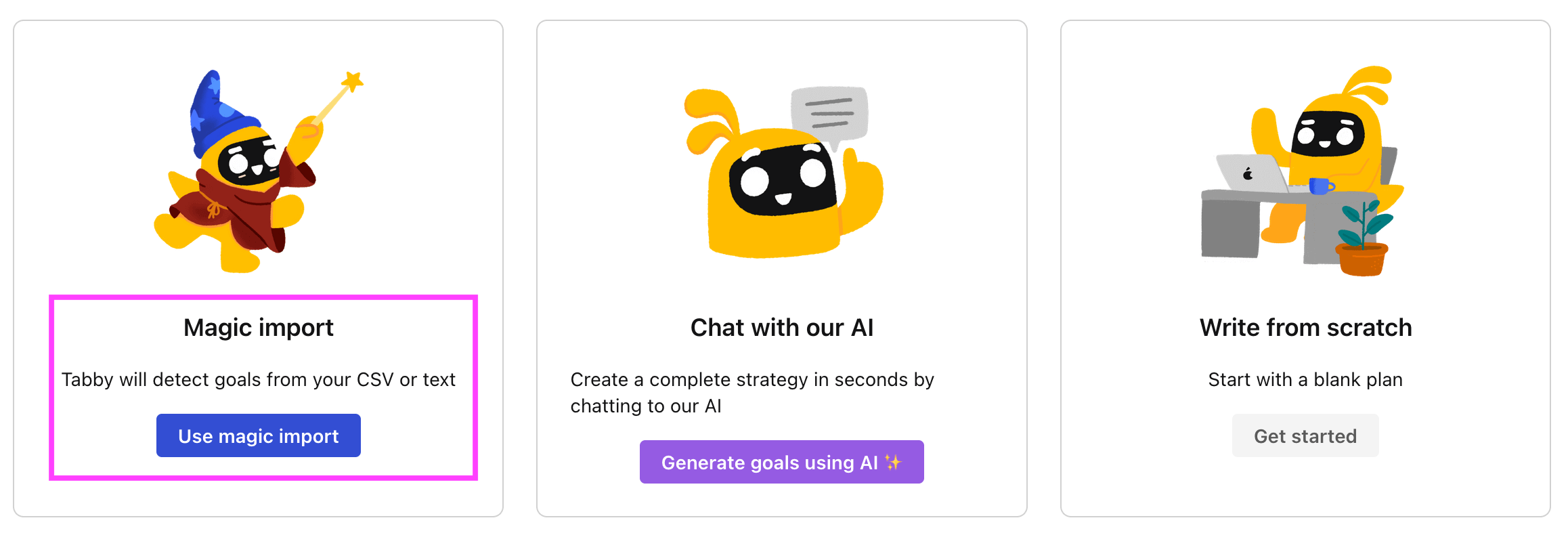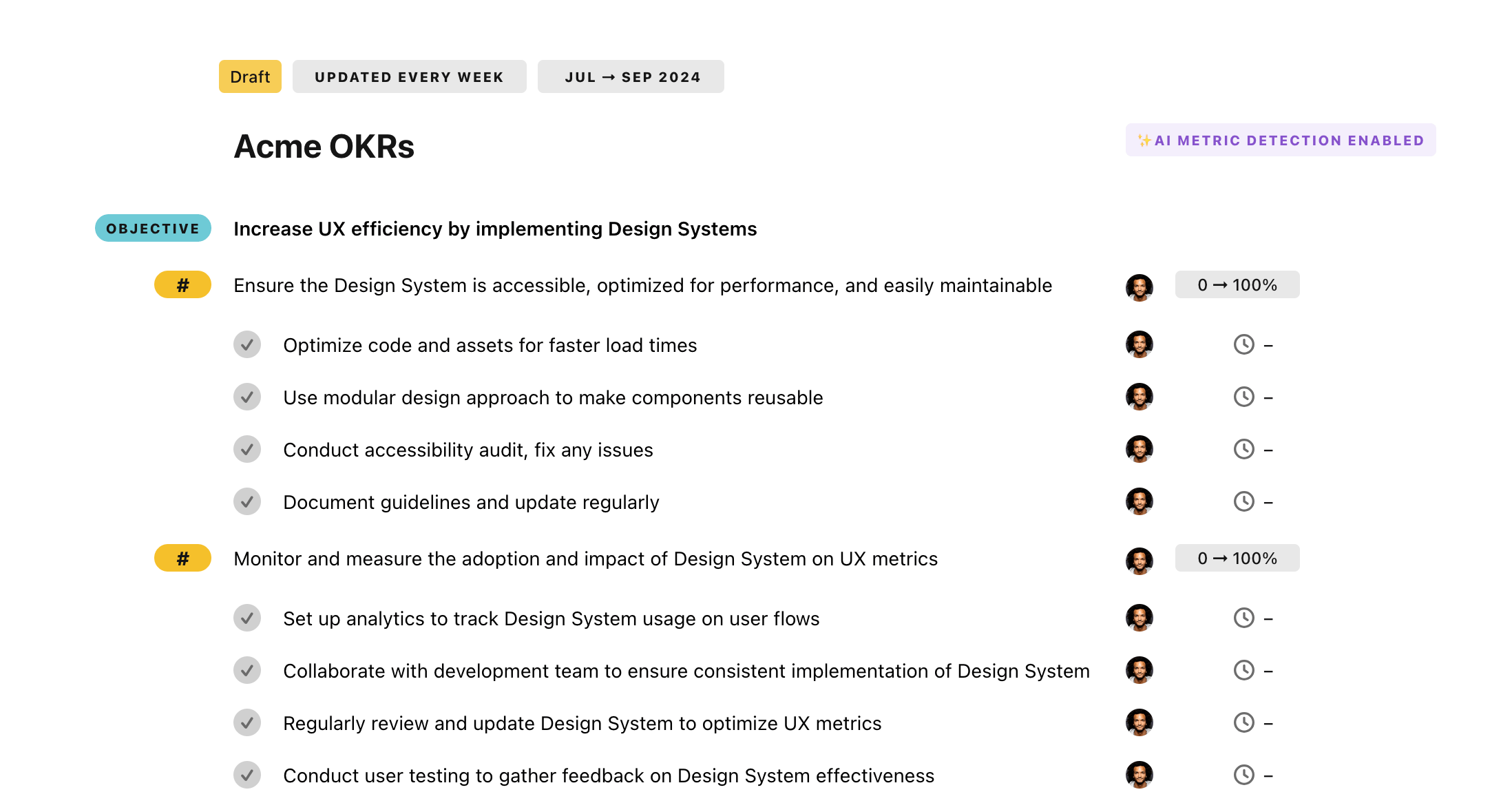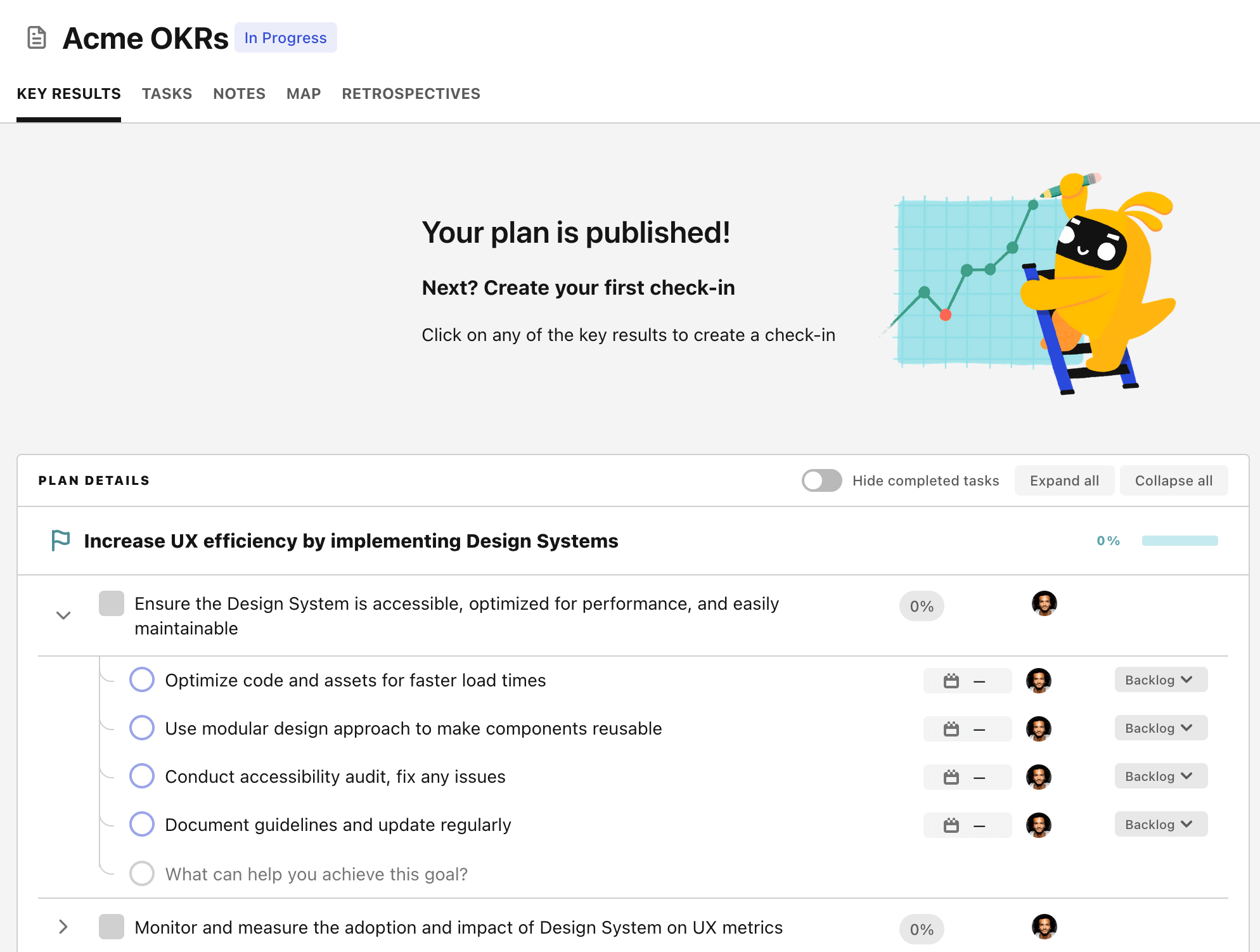OKR template to enhance efficiency in website building process
Your OKR template
A secondary goal is to increase development speed by 15% through employing a reusable code library. To accomplish this, the team will be coached on how to use and implement library code. A robust code library will also be formulated and recurrent coding tasks will be identified for enlistment in the library.
Another important objective is dedicate 1/5 of all work time for team training on more efficient web development methods. This requires identification of key areas that need improvement, scheduling and conducting regular training to scale up efficiencies in website development.
Moreover, there shall be an evaluation post training to measure the impact of the interventions on the development procedure. By doing this, the training efficiency will be monitored and reported, informing any potential adjustments to the overall website development process.
ObjectiveEnhance efficiency in website building process
KRReduce website development cycle by 25%
Utilize automated testing tools to accelerate error detection
Regularly review and improve website development processes
Implement agile methodologies for more efficient project management
KRImplement a reusable code library to increase development speed by 15%
Train team on accessing and implementing library code
Develop and thoroughly test the code library
Identify common coding tasks for inclusion in the library
KRDedicate 20% of work time for team training on efficient web development techniques
Identify key areas in web development for training
Schedule regular team training sessions in efficient web development
Measure improvements post-training
How to edit and track OKRs with Tability
You'll probably want to edit the examples in this post, and Tability is the perfect tool for it.
Tability is an AI-powered platform that helps teams set better goals, monitor execution, and get help to achieve their objectives faster.
With Tability you can:
- Use AI to draft a complete set of OKRs in seconds
- Connect your OKRs and team goals to your project
- Automate reporting with integrations and built-in dashboard
Instead of having to copy the content of the OKR examples in a doc or spreadsheet, you can use Tability’s magic importer to start using any of the examples in this page.
The import process can be done in seconds, allowing you to edit OKRs directly in a platform that knows how to manage and track goals.
Step 1. Sign up for a free Tability account
Go tohttps://tability.app/signup and create your account (it's free!)
Step 2. Create a plan
Follow the steps after your onboarding to create your first plan, you should get to a page that looks like the picture below.

Step 3. Use the magic importer
Click on Use magic import to open up the Magic Import modal.
Now, go back to the OKR examples, and click on Copy on the example that you’d like to use.

Paste the content in the text import section. Don’t worry about the formatting, Tability’s AI will be able to parse it!

Now, just click on Import from text and let the magic happen.

Once your example is in the plan editor, you will be able to:
- Edit the objectives, key results, and tasks
- Click on the target 0 → 100% to set better target
- Use the tips and the AI to refine your goals
Step 4. Publish your plan
Once you’re done editing, you can publish your plan to switch to the goal-tracking mode.

From there you will have access to all the features that will help you and your team save hours with OKR reporting.
- 10+ built-in dashboards to visualise progress on your goals
- Weekly reminders, data connectors, and smart notifications
- 9 views to map OKRs to strategic projects
- Strategy map to align teams at scale